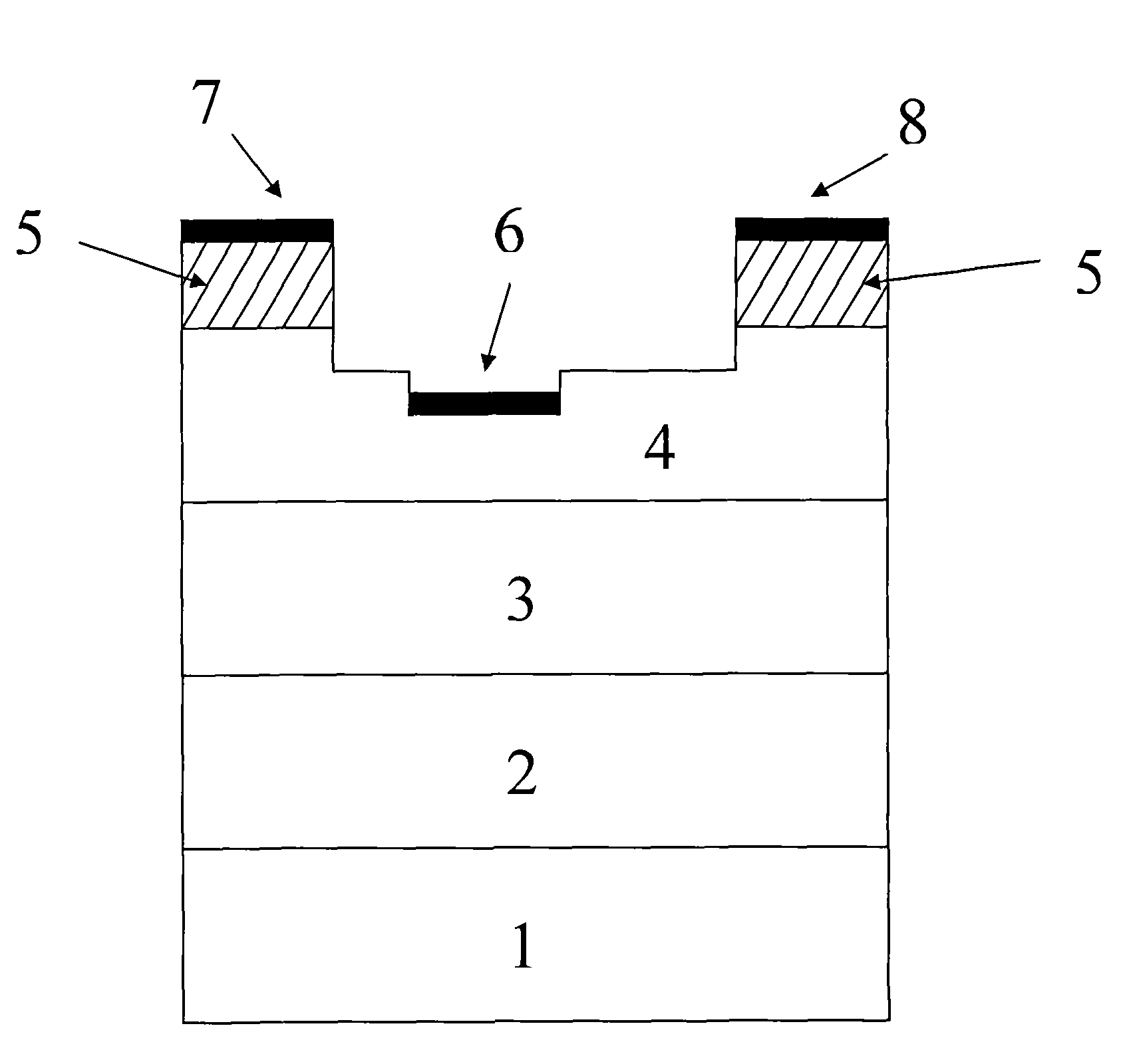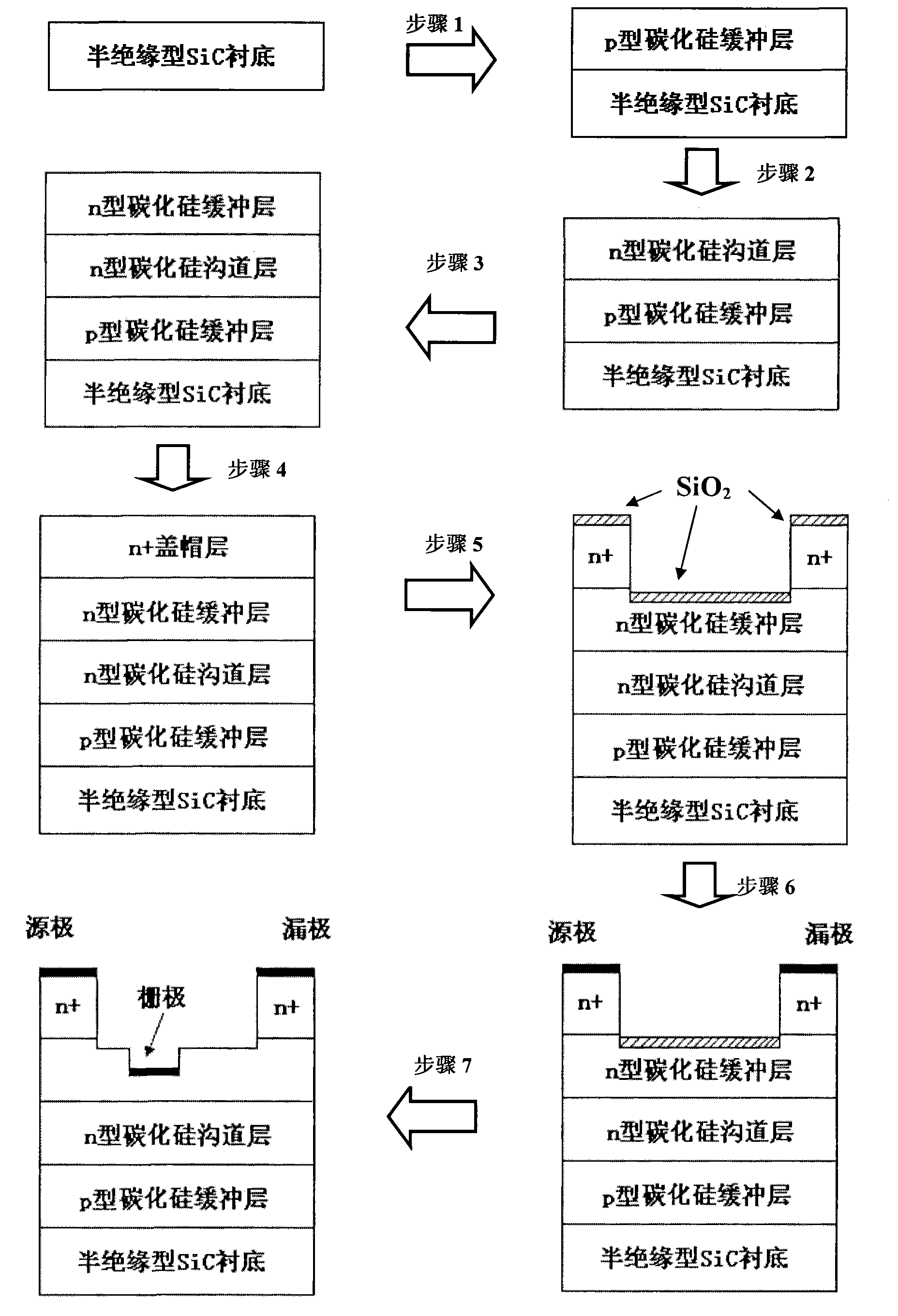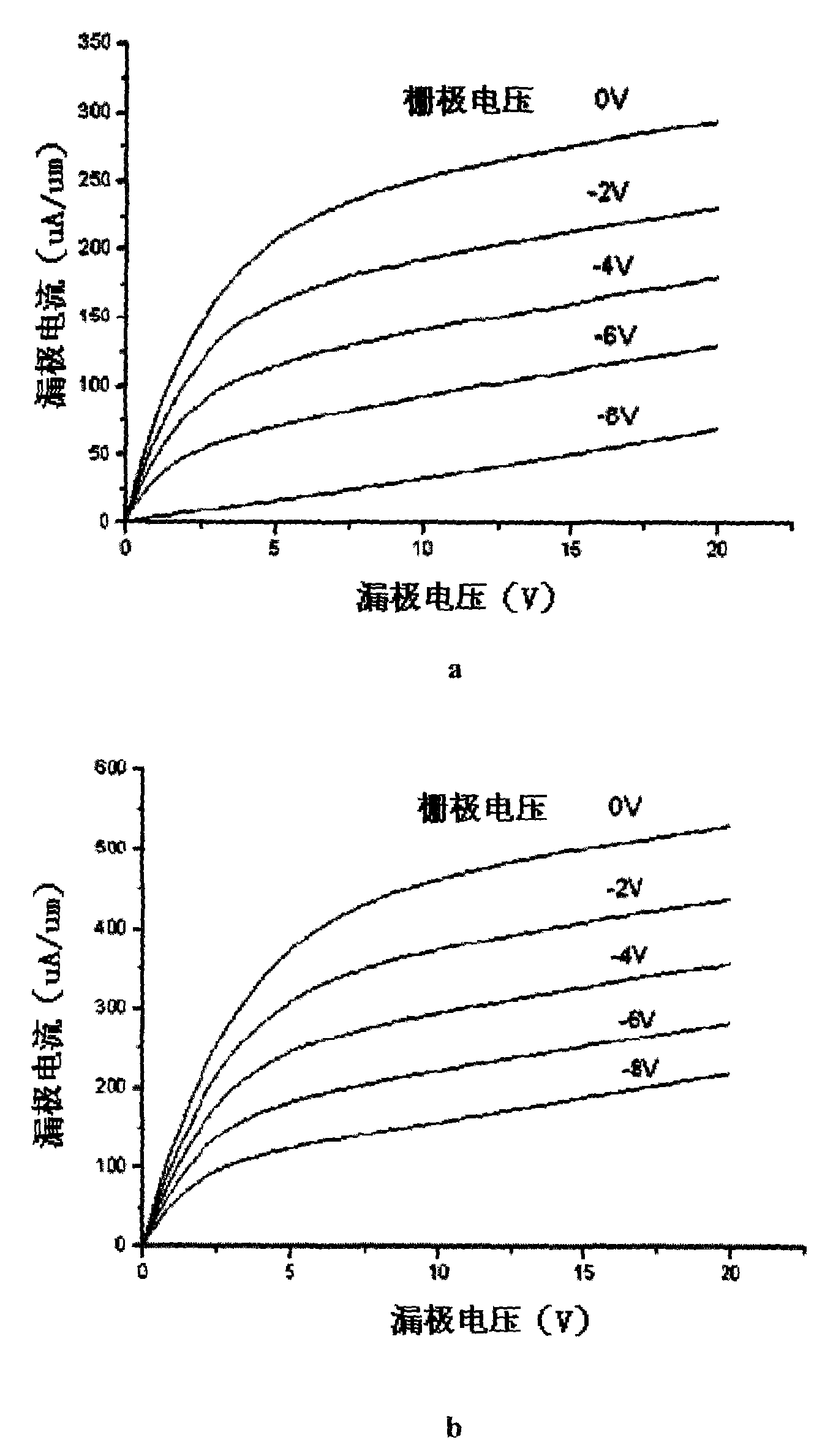Metal-semiconductor field effect transistor and production method thereof
A field-effect transistor and manufacturing method technology, applied in the manufacture of high-frequency and high-power integrated circuits, the field-effect transistor field, can solve the problems of reduced leakage current, reduced electron mobility, trap effect, etc., so as to reduce the contact area, improve the Control ability, the effect of reducing the impact
- Summary
- Abstract
- Description
- Claims
- Application Information
AI Technical Summary
Problems solved by technology
Method used
Image
Examples
Embodiment 1
[0030] Embodiment 1, the specific process of making the device of the present invention is as follows:
[0031] Step 1, epitaxially growing a p-type silicon carbide buffer layer.
[0032] On a semi-insulating silicon carbide substrate, a layer of p-type doping is epitaxially grown with a concentration of 1.4×10 15 cm -3 , a p-type epitaxial buffer layer with a thickness of 0.50 μm.
[0033]Step 2, epitaxially growing an n-type silicon carbide channel layer.
[0034] On the p-type silicon carbide buffer layer, a layer of n-type doping is epitaxially grown with a concentration of 3.4×10 17 cm -3 , n-type silicon carbide channel layer with a thickness of 0.26 μm.
[0035] Step 3, epitaxially growing an n-type silicon carbide buffer layer.
[0036] On the n-type silicon carbide channel layer, a layer of n-type doping is epitaxially grown with a concentration of 1.4×10 15 cm -3 , an n-type silicon carbide buffer layer with a thickness of 0.10 μm.
[0037] Step 4, epitaxial...
Embodiment 2
[0049] Embodiment 2, the specific process of making the device of the present invention is as follows:
[0050] Step 1, epitaxially growing a p-type silicon carbide buffer layer.
[0051] On a semi-insulating silicon carbide substrate, a layer of p-type doping is epitaxially grown with a concentration of 1.0×10 15 cm -3 , a p-type epitaxial buffer layer with a thickness of 0.80 μm.
[0052] Step 2, epitaxially growing an n-type silicon carbide channel layer.
[0053] On the p-type silicon carbide buffer layer, epitaxially grow a layer of n-type doping with a concentration of 4.0×10 17 cm -3 , n-type silicon carbide channel layer with a thickness of 0.20 μm.
[0054] Step 3, epitaxially growing an n-type silicon carbide buffer layer.
[0055] On the n-type silicon carbide channel layer, epitaxially grow a layer of n-type doping with a concentration of 1.0×10 15 cm -3 , an n-type silicon carbide buffer layer with a thickness of 0.05 μm.
[0056] Step 4, epitaxially grow...
Embodiment 3
[0068] Embodiment 3, the specific process of making the device of the present invention is as follows:
[0069] Step 1, epitaxially growing a p-type silicon carbide buffer layer.
[0070] On a semi-insulating silicon carbide substrate, a layer of p-type doping is epitaxially grown with a concentration of 2.0×10 15 cm -3 , a p-type epitaxial buffer layer with a thickness of 0.60 μm.
[0071] Step 2, epitaxially growing an n-type silicon carbide channel layer.
[0072] On the p-type silicon carbide buffer layer, a layer of n-type doping is epitaxially grown with a concentration of 1.0×10 17 cm -3 , n-type silicon carbide channel layer with a thickness of 0.40 μm.
[0073] Step 3, epitaxially growing an n-type silicon carbide buffer layer.
[0074] On the n-type silicon carbide channel layer, a layer of n-type doping is epitaxially grown with a concentration of 2.0×10 15 cm -3 , an n-type silicon carbide buffer layer with a thickness of 0.15 μm.
[0075] Step 4, epitaxia...
PUM
| Property | Measurement | Unit |
|---|---|---|
| Doping concentration | aaaaa | aaaaa |
| Thickness | aaaaa | aaaaa |
| Thickness | aaaaa | aaaaa |
Abstract
Description
Claims
Application Information
 Login to View More
Login to View More - R&D
- Intellectual Property
- Life Sciences
- Materials
- Tech Scout
- Unparalleled Data Quality
- Higher Quality Content
- 60% Fewer Hallucinations
Browse by: Latest US Patents, China's latest patents, Technical Efficacy Thesaurus, Application Domain, Technology Topic, Popular Technical Reports.
© 2025 PatSnap. All rights reserved.Legal|Privacy policy|Modern Slavery Act Transparency Statement|Sitemap|About US| Contact US: help@patsnap.com



